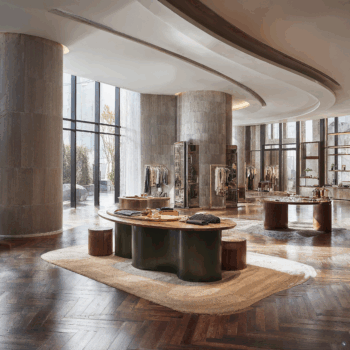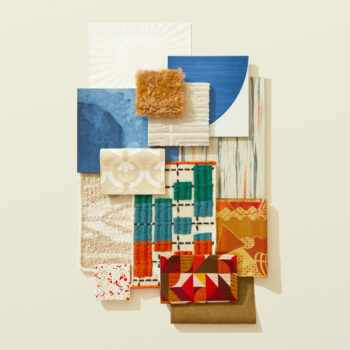
This versatile color is the ideal shade for any space.
Teal is a versatile color that sits somewhere between blue and green. It’s both soothing and invigorating—a color that makes a statement without being loud. This duality makes this shade an excellent choice for interior design, as it can enhance your design by adapting to various moods and settings, providing a balance between tranquility and vibrancy.
One of the benefits of using teal in interior design is that it works well with a variety of other colors. It pairs beautifully with warm earthy tones, such as beige and brown, as well as bright and bold hues, such as yellow and orange. This flexibility makes it easy to incorporate into any design style, whether it be traditional or modern. For instance, in a traditional setting, it can add a touch of sophistication when paired with rich wood finishes and classic furniture. In a more contemporary space, it can serve as a striking accent color against a backdrop of neutral shades, creating a fresh and dynamic look.
It can also be used to add depth and dimension to a space. By using different shades of teal, such as a light aqua or a deep emerald, it’s possible to create a layered effect that draws the eye and adds visual interest to the room. This technique can be particularly effective in creating focal points or highlighting architectural features. For example, a deep teal accent wall can serve as a stunning backdrop for artwork or a statement piece of furniture, while lighter shades can be used for larger areas to maintain a sense of openness and light.
The impact of this beautiful blue-green hue is also influenced by lighting conditions. Natural light can bring out the green undertones, while artificial light can emphasize the blue undertones. This variability allows the color to change its appearance throughout the day, adding an element of dynamism to the space. In a well-lit room, teal can appear vibrant and refreshing, while in a dimmer setting, it can take on a more muted and calming tone. This adaptability makes it a practical choice for rooms that are used for different purposes at different times of the day, such as living rooms and bedrooms.
Teal is not limited to wall colors alone. It can be introduced through various elements, such as furniture, textiles, and accessories. When used for a sofa or armchair it can be a bold statement piece, while cushions, rugs, or curtains can add subtle pops of color to a neutral scheme. Additionally, incorporating it into patterns and prints provides a cohesive look that ties together different elements of the room.
This versatile and dynamic color offers numerous possibilities for interior design. Its ability to harmonize with a wide range of colors and its capacity to add depth and dimension make it a valuable tool for creating visually appealing and balanced spaces. Whether used as a dominant color or an accent you can enhance your design with teal‘s aesthetic appeal and enrich the atmosphere of any room, making it a timeless choice for interior decorators and homeowners alike.
Read more about the effects of incorporating color in your design with, Energize your Office with Neon Colors.







